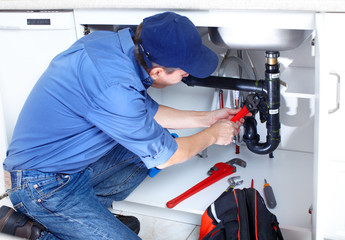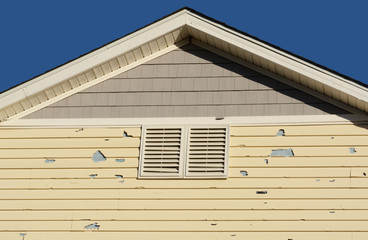Fiberglass Auto Body Repair
Fiberglass is a lightweight material that can be used to repair various problems. It is relatively inexpensive and easy to work with.
The surface needs to be prepped to get started with fiberglass auto body repair. This is done by using coarse-grit sandpaper to scuff the area. Click the Fiberglass Auto Body Repair to learn more.

Fiberglass is a popular material for the body of cars because it is durable and aesthetically pleasing. However, like other materials used in the construction of automobiles, fiberglass can be damaged from accidents and stress. This can lead to structural weakness and require professional repairs. Juanito’s Auto Body has the skills and technology needed to restore fiberglass to its original strength and appearance.
Before beginning any repair work, the first step is to prepare the area that needs to be repaired. This is done by sanding the surface and cleaning away any dirt or debris that might interfere with the adhesion of new fiberglass layers. This step is important because the quality of a fiberglass repair depends on how well the new layers bond to the old ones.
During the prep phase, it is also important to clean and etch the surface of any metal that might be exposed. This will help the fiberglass bond better to the metal and reduce future problems. Using a die grinder with a wire wheel is a good way to remove any thin rust that may be on the surface. It is also a good idea to use gloves when working with fiberglass because it can imbed itself in your skin and can cause irritation.
The sanding process is a bit more involved than when using body filler or putty, but it’s necessary to create a smooth surface for the new fiberglass. Once the sanding is complete, the area should be thoroughly cleaned to remove any traces of grease or oil that may have accumulated. Then, a coat of etching primer is applied to the surface. It’s important to apply the etching primer on a day that is not windy, as the wind can carry particles of fiberglass into the air.
If you’re planning on using a fiberglass repair kit at home, Tim Manders suggests getting it from a boat repair store. This will ensure that you have the correct type of fiberglass resin and that it is high-quality. Cheap fiberglass resin can make a mess and may not adhere properly to the surface.
Molding
Fiberglass is a composite material made of thin strands of spun glass woven together and combined with resin. The mixture creates a strong, lightweight structure that’s used in cars, boats, and aircraft. Its ability to bend and curve makes it a good choice for sculpting aerodynamic vehicle bodies.
When damaged, fiberglass must be repaired to restore its strength and appearance. The first step in this process is to make sure the area of the repair is clean. This includes removing any paint and grease that could interfere with the proper adhesion of the new fiberglass layer.
The next step is to prepare the surface by sanding it down. This will ensure that the new layers of fiberglass and resin are properly bonded to the surrounding area. It also helps to smooth out any bumps or ridges that may exist in the damaged section of the car.
After the sanding is complete, it’s time to prepare the fiberglass for the mold. This involves mixing up a batch of short strand fiberglass filler and adding it to the surface. It’s important to mix the filler according to the instructions on the can. This will usually require a ratio of resin to hardener that’s printed on the label. It’s also a good idea to use a plastic bucket when mixing to avoid contaminating the resin.
Then the short strand fiberglass is added to the surface, and the mix is spread out evenly. It’s important to keep an eye on the thickness of the fiberglass, as too much can result in weak spots, and too little can cause the repair to be too thin.
Lastly, the mixture is allowed to dry. This can take a while, depending on the weather conditions. It’s best to do this on a warm, clear day. If the weather is too cold, the fiberglass will take longer to cure.
After the fiberglass has dried, it’s ready to be gel coated. This final step will give the fiberglass a glossy finish that helps protect it from moisture, dirt, and UV rays. The process isn’t very difficult, and it doesn’t require any special equipment or skills to perform.
Applying
Fiberglass is an excellent material to use for repairing car bodies, particularly those that have sustained damage from the elements. It’s important to keep in mind, however, that working with fiberglass requires skill and patience to ensure a quality repair. This is why it’s a good idea to hire a professional for your bodywork, especially if the damage involves a large area or a structural part of the vehicle.
To begin, the damaged section of your car body must be cleaned thoroughly. Use a degreaser to remove any dirt and grease that may be present. After the surface has been cleaned, a layer of primer should be applied to the repaired area. This will help the filler stick and prevent lifting during the finishing process.
Next, a mixture of resin and fiberglass cloth must be prepared. This is typically done in a well-ventilated area to avoid inhaling harmful resin fumes. The fiberglass cloth must be soaked in the resin mixture until it takes on the color of the mixture and there are no white areas showing. The excess resin should then be dumped, as putting it back into the container will spoil the rest of the mixture.
Once the fiberglass has been soaked, it must be cut and placed over the damaged area of the vehicle. The edges of the fiberglass must be taped to ensure that it is held securely in place. A fresh layer of gelcoat must then be applied, which is a thick coat that is similar to paint or primer. The fiberglass must dry for 24 hours before the car can be repainted.
Unlike many other materials, fiberglass is durable and can withstand the test of time. However, like any other material, it can become damaged due to impact or general wear and tear. Thankfully, repairing fiberglass is relatively simple and can be completed at home. To make the repair, follow these five fundamental principles.
Although fiberglass is more resilient than traditional metal, it can still be affected by star cracks and other common problems. If your fiberglass is prone to these issues, it’s important to have it properly repaired. This will protect the integrity of your vehicle’s structure and improve its appearance.
Finishing
Fiberglass is very strong and durable when properly cared for, but it is not impervious to damage. A fender bender, road debris, or simply age can leave the fiberglass body in a less than ideal shape. A damaged body requires careful repair by a professional shop like Juanito’s Auto Body. This process involves stripping the old paint and gelcoat from the affected area to reveal the underlying structure of the fiberglass, then repairing it with fresh materials. The final step is applying a fresh layer of gelcoat to give the repaired body a sleek, attractive finish.
When doing fiberglass body work, it’s important to have all your tools ready and be prepared for a mess. Fiberglass resin is messy, and it will drip as it dries, so you should cover any areas not being worked on with cardboard or a drop cloth to keep the mess under control. You also want to make sure you have enough resin on hand to complete the entire job. Adding layers as you go will make the finished product stronger, but you won’t have much time to do this if you are working on more than one small area at a time.
The most difficult aspect of this stage is making sure that the new surface is free from defects and blemishes. You can use spot putty to fill in small divots and depressions, or you can sand the surface using progressively coarser grits until you have a smooth, even texture. If you’re using an electric sander, be careful to not hit the metal components of your vehicle that are bonded to the fiberglass. This can cause rust and corrosion that will weaken the final product.
Once the surface has been sanded and smoothed, it’s time to apply some fresh gelcoat. This is a thick substance that looks and acts a lot like paint but is applied with a special spray gun. It’s very important to make sure the gelcoat is free from nicks, scratches and other flaws, because it will be the final protective layer on your vehicle.




